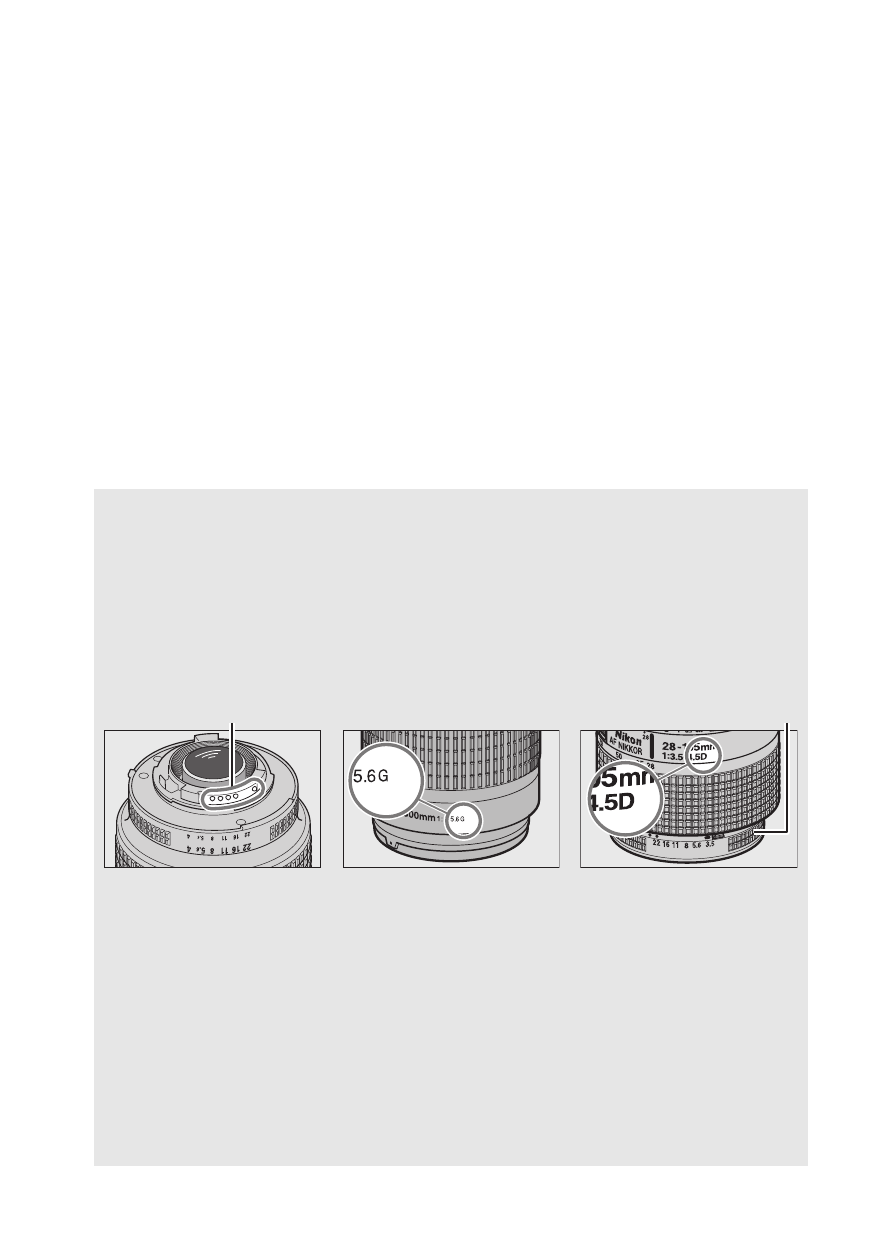Nikon D5500 User Manual
Page 339

315
Technical Notes
3 Shifting and/or tilting the lens interferes with exposure.
4 Can not be used with shifting or tilting.
5 Optimal exposure will only be achieved if the lens is at maximum aperture and the lens is not
shifted or tilted.
6 With maximum effective aperture of f/5.6 or faster.
7 When AF 80–200mm f/2.8, AF 35–70mm f/2.8, AF 28–85mm f/3.5–4.5 (New), or
AF 28–85mm f/3.5–4.5 lenses are zoomed all the way in at the minimum focus distance, the
in-focus indicator (
I) may be displayed when the image on the matte screen in the
viewfinder is not in focus. Before shooting, confirm that the image in the viewfinder screen is
in focus.
8 With maximum aperture of f/5.6 or faster.
• Noise in the form of lines may appear during autofocus when movies
are recorded at high ISO sensitivities. Use manual focus or focus lock.
D
IX NIKKOR Lenses
IX NIKKOR lenses can not be used.
A
Identifying CPU and Type G, E, and D Lenses
CPU lenses can be identified by the presence of CPU contacts, type G,
E, and D lenses by a letter on the lens barrel. Type G and E lenses are
not equipped with a lens aperture ring.
CPU contacts
Aperture ring
CPU lens
Type G or E lens
Type D lens
When using a CPU lens equipped with an aperture ring, lock the
aperture ring at the minimum aperture (highest f-number).
A
Matrix Metering
For matrix metering, the camera uses a 2016-pixel RGB sensor to set
exposure according to tone distribution, color, composition, and, with
type G, E, or D lenses, distance information (3D color matrix metering
II; with other CPU lenses, the camera uses color matrix metering II;
which does not include 3D distance information).